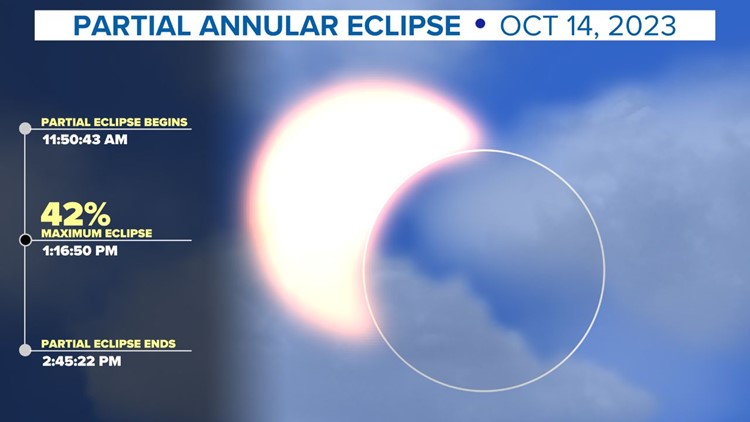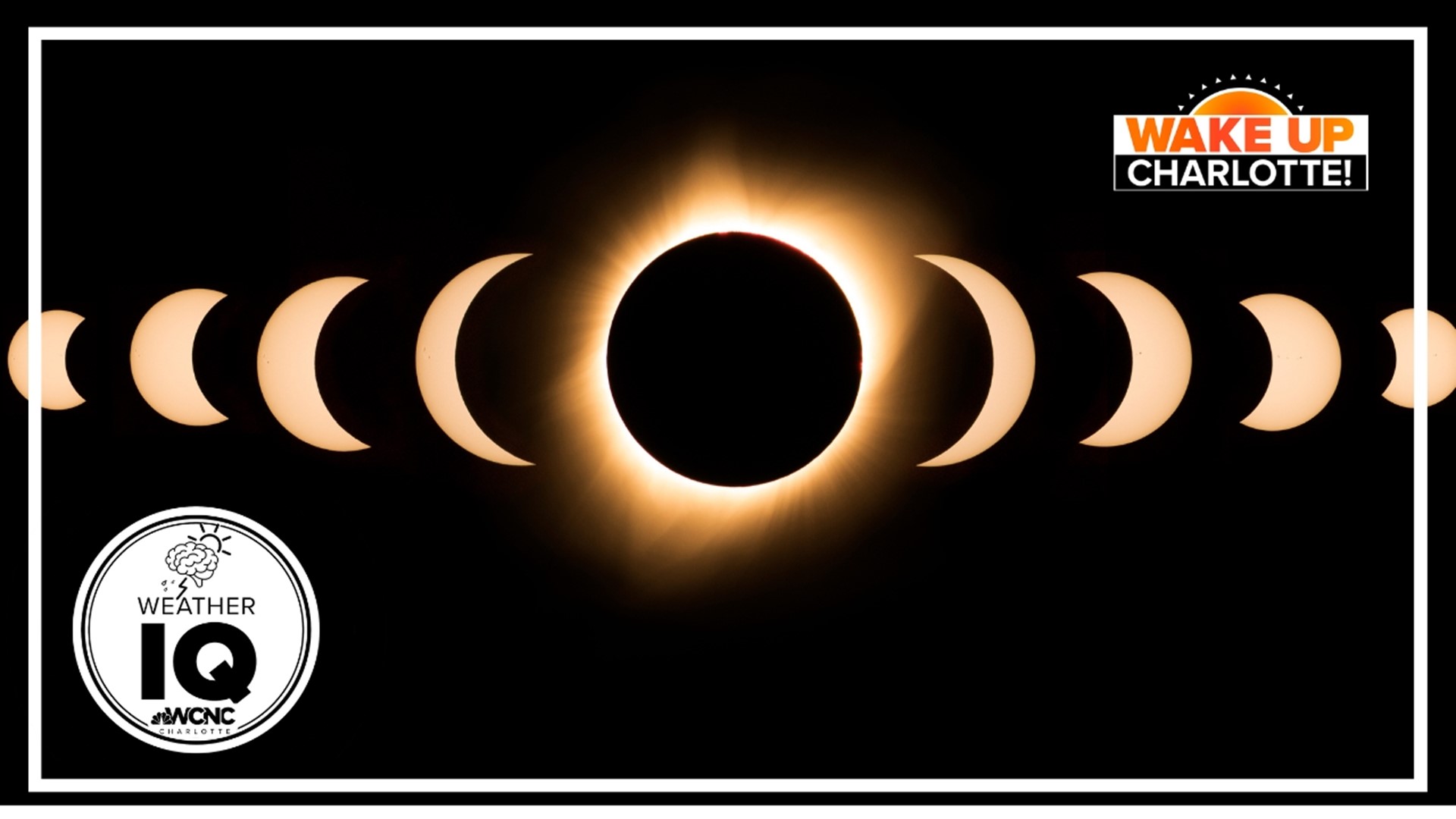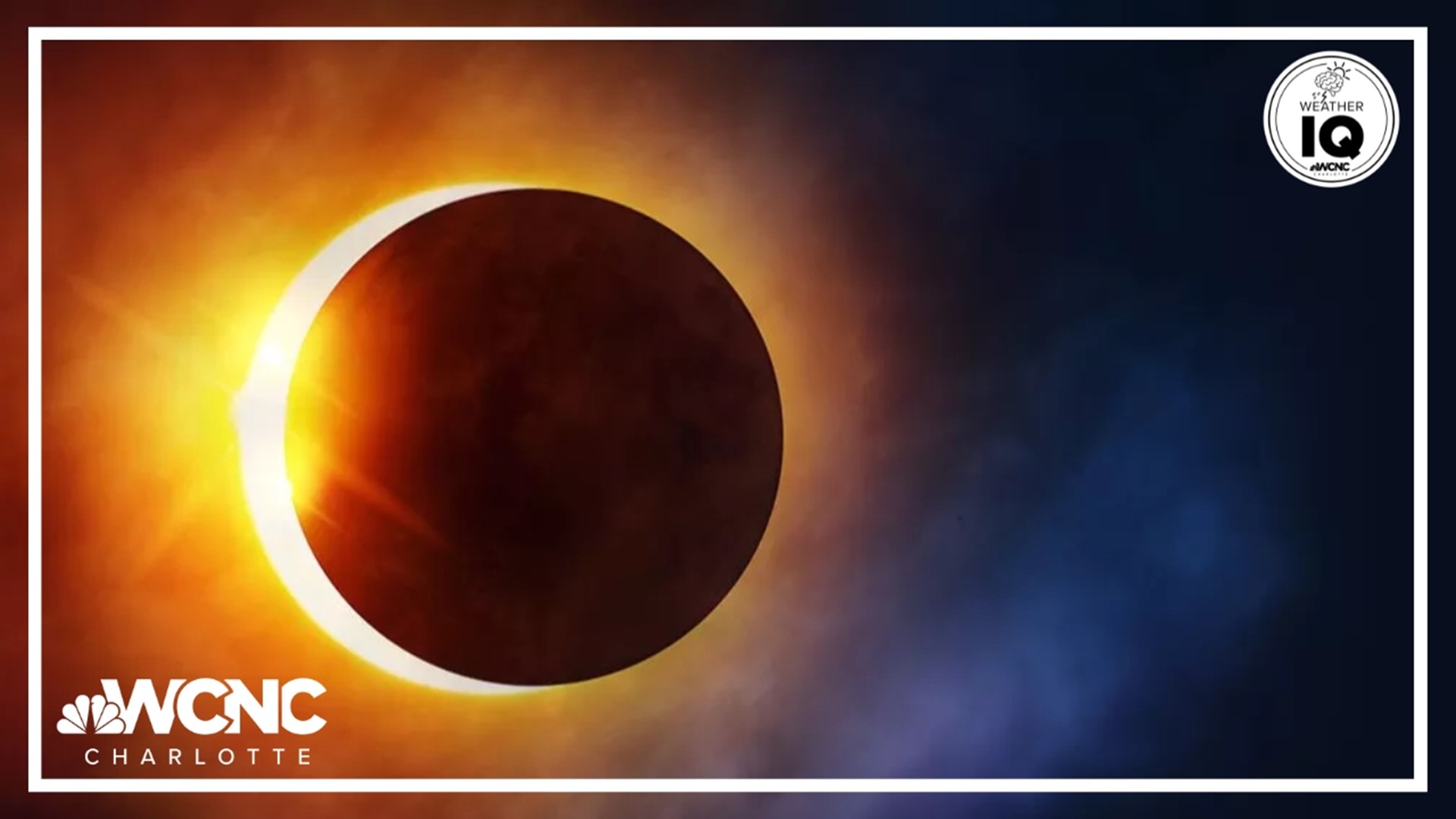CHARLOTTE, N.C. — A Saturday solar eclipse is one of the most hype-worthy celestial events -- and it is one of two eclipses the United States will see over the next six months.
Saturday's eclipse goes by a few different names including an "annular eclipse" or "ring of fire eclipse."
To raise your Weather IQ, WCNC Charlotte spoke with NASA Ambassador Tony Rice to make sure we bring you the most accurate information.
An eclipse is when the moon passes directly between the earth and the sun but "the moon's orbit isn’t quite circular... it’s a little bit more elongated,” Tony Rice, a Raleigh-based NASA ambassador explained.
When the moon is at its closest point, or perigee, it appears larger. These are frequently referred to as super moons. When an eclipse overlaps with the moon's perigee, it causes a total eclipse and the moon completely covers the sun. This was the case in 2017 in the United States.
During an apogee, the moon is at its furthest away point, is smaller and doesn’t quite cover the sun. This is the case for Saturday's annular eclipse and is what creates the "ring of fire." Since some of the sun is showing, this is technically a partial eclipse.
“The difference between those total and annular eclipses is where the moon will be in its orbit and how big it will appear in the sky,” teaches our NASA expert Tony Rice.
The Upcoming 'ring of fire eclipse'
On October 14th, 2023, the United States will have a rare eclipse called an annular eclipse.
"Annular" is frequently confused for "annual." In this case, the name comes from the Latin word Annulus, which means 'ring.'
This 110-mile-wide path stretches over a thousand miles from Oregon through Texas.

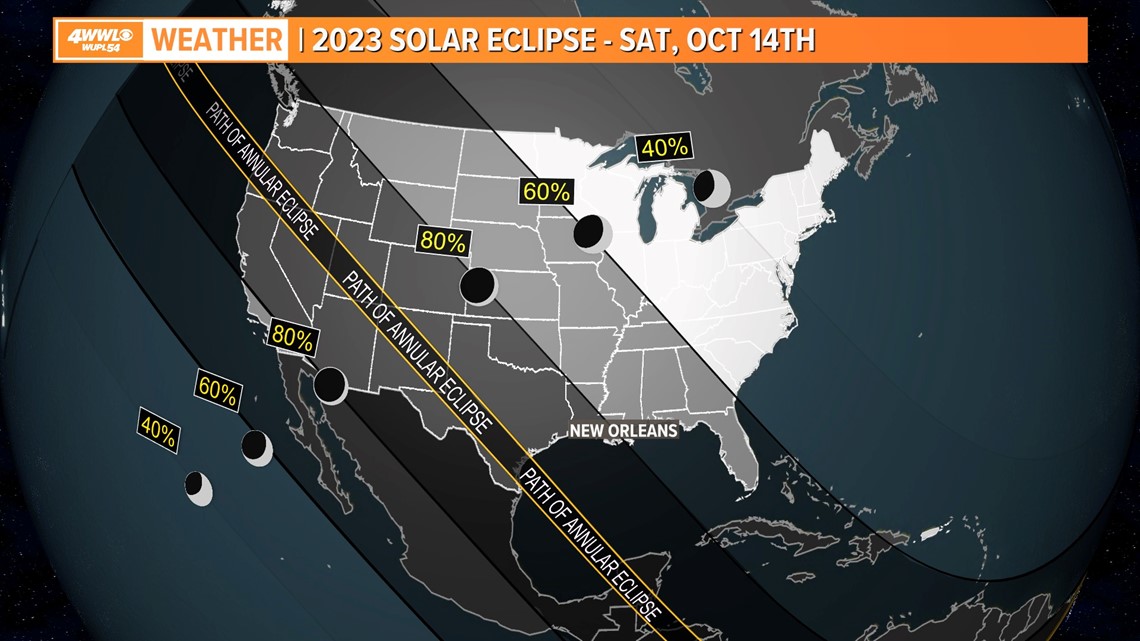
Times of full annularity for some across the U.S.:
- Eugene, Oregon - 9:18 a.m. PDT
- Albuquerque, NM - 10:35 a.m. MDT
- San Antonio, Texas - 11:45 a.m. CDT
Those living outside the path still need to have their glasses ready. The rest of the continental U.S. will see a partial eclipse where it looks like someone took a bite out of the sun.
For the latest weather alerts, download the WCNC Charlotte mobile app and enable push notifications.
When can Charlotte see it?

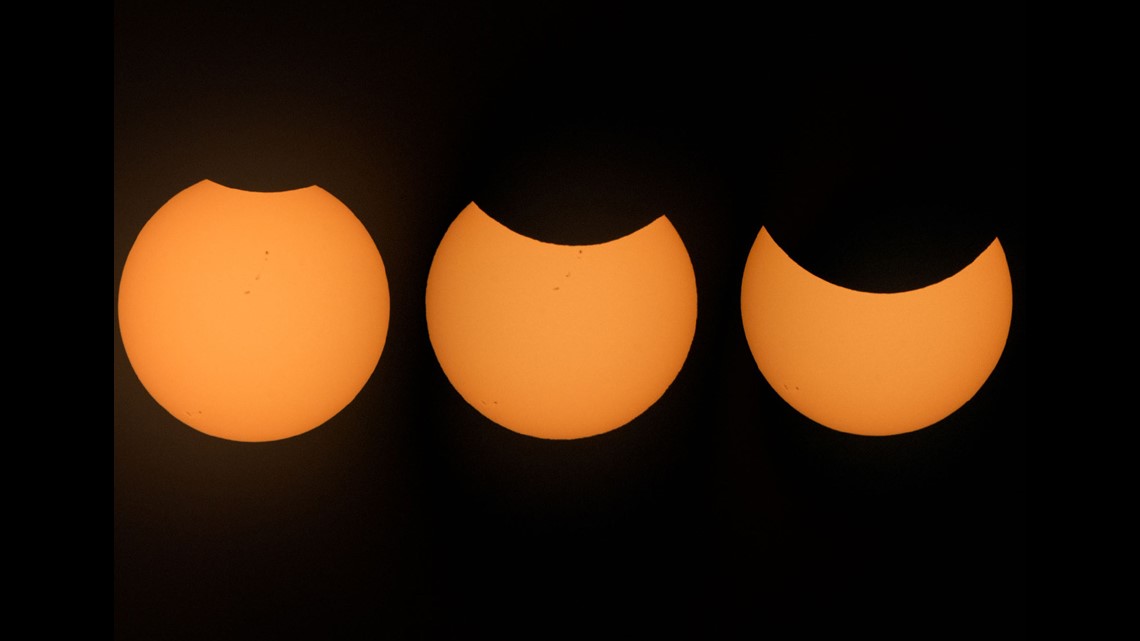
Charlotte will experience a partial eclipse on Saturday.
On Saturday, October 14th, Charlotte's partial Eclipse starts at 11:50:44 a.m. and ends around 2:45:21 p.m. The peak will be at 1:16:50 p.m. as Charlotte sees about 50% of the sun covered.
However, the WCNC Charlotte weather team is closely monitoring clouds in the forecast. Scattered clouds in the Carolinas on Saturday could interfere with viewing the eclipse. In a forecast vlog on WCNC Charlotte's Weather IQ YouTube channel, WCNC Charlotte Chief Meteorologist Brad Panovich explained the cloud chances in the Carolinas.
Regardless of cloud cover in the Carolinas, WCNC+ will stream live coverage from KENS-TV, our sister station in Texas which is directly in the path of totality.
The last time the United States had an annular eclipse was May 20, 2012. The next one isn’t until July 2084.
The last time Charlotte had a total eclipse from a path of annularity was 1831. The next one will be 2267.
The next total eclipse: The Great American Eclipse

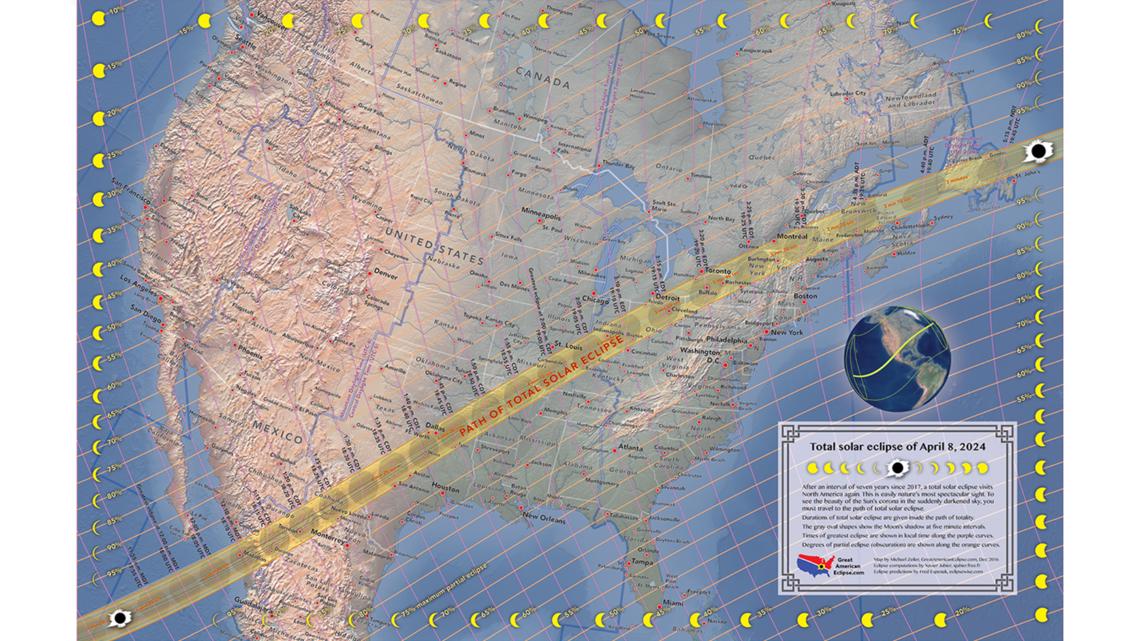
The next total eclipse in the United States will be on April 8, 2024. The path of totality will be longer than the annular eclipse spanning from Texas up through New England.
Charlotte will see an 80% partial eclipse in April. The last total eclipse in the United States happened in 2017.
Charlotte will not be in the path of totality again until May 2078.
Two eclipses for Texas

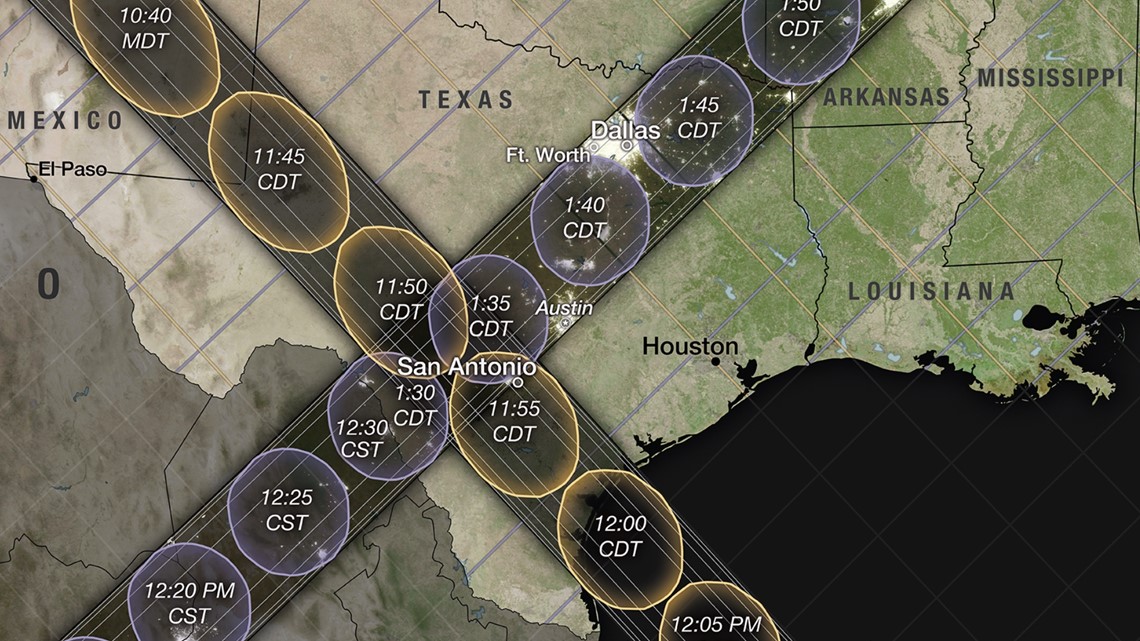
Between October and April, an area of Texas near San Antonio will get to witness the totality of both eclipses. The overlapping celestial events have made this, and other areas, popular with tourists.
Eclipse viewing safety
You need special glasses to safely view an eclipse. Sunglasses won’t do it.
Never look directly at the sun at any time.
If you cannot buy glasses, NASA has instructions to build your own eclipse glasses.
Contact Chris Mulcahy at cmulcahy@wcnc.com and follow him on Facebook, X, Instagram and TikTok.
WCNC Charlotte’s Weather IQ YouTube channel gives detailed explainers from the WCNC Charlotte meteorologists to help you learn and understand weather, climate and science. Watch previous stories where you can raise your Weather IQ in the YouTube playlist below and subscribe to get updated when new videos are uploaded.


